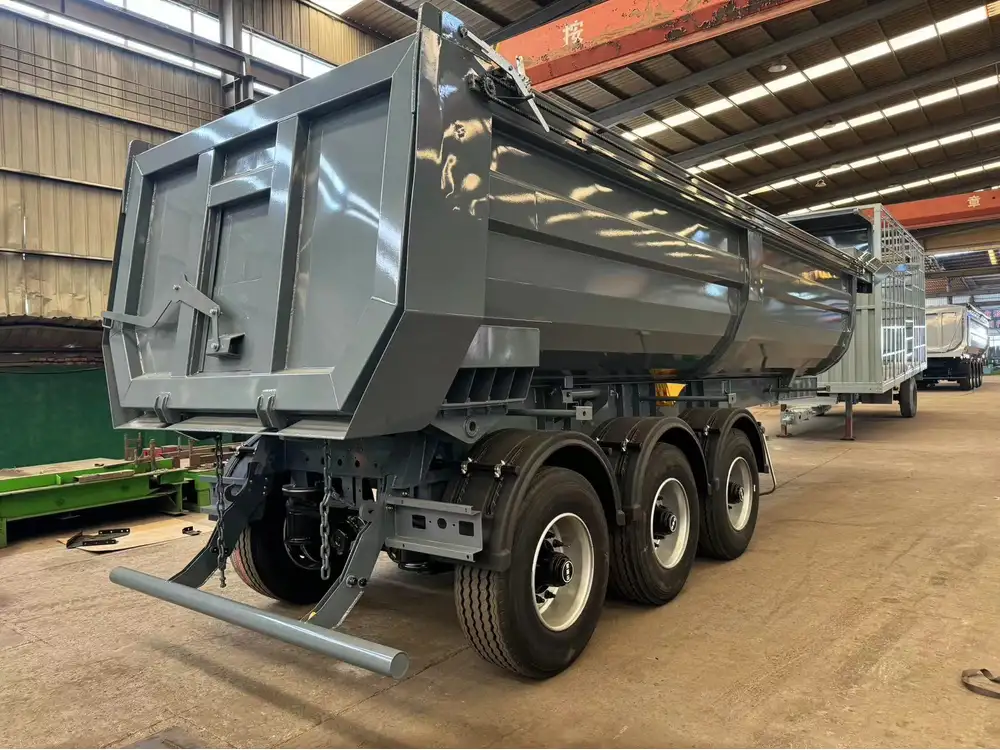Maintaining the cleanliness of your trailer’s fresh water tank is crucial for ensuring that the water you consume and use is safe and free from contaminants. This guide provides comprehensive insights into the best practices, frequency, and techniques for cleaning your trailer’s fresh water tank.
Understanding the Importance of Fresh Water Tank Maintenance
A fresh water tank can become a breeding ground for bacteria, algae, and harmful pathogens when not properly maintained. Regular cleaning can prevent these issues, ensuring safe and clean water availability. Additionally, clean tanks can enhance the longevity of your trailer’s plumbing system and prevent costly repairs down the line.
Key Risks of Poor Maintenance
| Risk | Consequences |
|---|---|
| Bacterial Growth | Waterborne illnesses can occur. |
| Algae Accumulation | Clogs in filters and plumbing. |
| Mineral Deposits | Corrosion and reduced efficiency. |
| Unpleasant Odors | Compromised water quality and taste. |

Establishing a Cleaning Schedule
Establishing a routine cleaning schedule is essential for optimal maintenance of your trailer’s fresh water tank. Several factors influence how often you should perform this clean-up.
Recommended Cleaning Frequencies
Before Initial Use:
- Clean the tank before your first trip each season. This ensures that any stagnant water from previous use is flushed out.
After Long Periods of Inactivity:
- If your trailer has been unused for more than a month, consider sanitizing the tank beforehand.
Seasonal Cleanings:
- A quarterly cleaning, conducted every three months, is advisable if you frequently use your trailer, ensuring that contaminants do not build up.
Regular Water Usage:
- If your trailer is in regular use, cleaning after every 1,000 gallons of water consumption or after each major trip can help maintain freshness.
Signs That Indicate Immediate Cleaning
- Foul Smells: If you notice odors emanating from the water, it’s time to clean the tank.
- Cloudy or Discolored Water: Any discoloration may indicate contamination.
- Presence of Sediment: If you spot sediment in the tank or tap, it requires immediate attention.
- Excessive Algae Growth: Green, sludgy deposits appear in the tank.

Steps to Clean Your Fresh Water Tank
Cleaning the fresh water tank is a straightforward process, but it requires attention to detail and caution to ensure effectiveness.
Equipment and Supplies Needed
- Bleach or Vinegar (non-toxic alternative)
- Bucket
- Soft brush or sponge
- Hose with a spray nozzle
- Water source
- Protective gloves
- Measuring cup
Step-by-Step Cleaning Process
Drain the Tank:
- Begin by fully draining the fresh water tank.
Prepare the Cleaning Solution:
- Mix 1/4 cup of unscented bleach per 15 gallons of water the tank holds. If opting for vinegar, use a 1:10 ratio of vinegar to water.
Add the Solution:
- Fill the tank with clean water and add the cleaning solution.
Agitate the Mixture:
- Pump the solution through the system by turning on the water pump. Open all faucets until the solution reaches them. Let it sit for about 12 to 24 hours.
Rinse Thoroughly:
- Drain the tank again and rinse multiple times with clean water until the smell of bleach or vinegar is completely gone.
Inspect the Tank:
- Check for any remaining residues or odors before refilling with fresh water.
Refill and Flush the System:
- Refill with fresh water and let it sit for an hour before flushing again with clean water.

Choosing the Right Cleaning Products
Selecting proper cleaning products is essential for health and safety.
Pros and Cons of Common Cleaning Agents
| Cleaning Agent | Advantages | Disadvantages |
|---|---|---|
| Bleach | Effective at killing bacteria | Harsh chemicals, must be rinsed extensively |
| Vinegar | Eco-friendly and non-toxic | Less potent, may require multiple cleanings |
| Commercial Cleaners | Specifically designed for tanks | Often contains harmful chemicals |
Best Practices for Water Quality Maintenance
To ensure ongoing cleanliness, follow these best practices.

1. Use Quality Water
Always fill your tank with clean water from a reliable source. Look for water that has been treated and tested for safety.
2. Install Water Filters
Consider installing inline water filters that can trap sediments and other impurities before they enter your tank.
3. Regularly Check for Leaks
Inspect your plumbing connections regularly to prevent contamination from external sources. Look for signs of wear, corrosion, or leaks that could introduce pollutants.

4. Monitor Water Temperature
Store your trailer in a cool, dry area to prevent mold and algae growth. Extreme temperatures can lead to an increase in bacteria.
5. Maintain a Clean Environment
Keep the area around your trailer clean and free from debris that might contaminate your fresh water system. This includes checking hoses, spigots, and connections for cleanliness.
6. Use the Tank Regularly
Frequent use of the water system helps to keep the water circulating, which minimizes the likelihood of bacterial growth. If you expect the tank to remain unused, consider periodically draining and cleaning it.

Troubleshooting Common Issues
Problem: Persistent Odors
- Solution: Check for any stagnant water left in the tank or plumbing. Repeat the cleaning process with additional rinsing.
Problem: Algae Growth
- Solution: Algae can thrive in warm conditions. Ensure that the tank is kept cool and consider using a stronger cleaning solution.

Problem: Discolored Water Post-Cleaning
- Solution: Conduct a thorough rinse and double-check the integrity of the tank. Persistent discoloration may indicate deeper issues, requiring professional assessment.
Conclusion
Maintaining a clean fresh water tank in your trailer is not just a matter of comfort; it’s a vital component of your health and safety. By adhering to a consistent cleaning schedule and implementing best practices, you can ensure that the water in your trailer is always fresh and safe for consumption.
Make cleaning your trailer’s fresh water tank a habit, and feel confident knowing that you’re taking proactive measures to preserve the health and safety of yourself and your loved ones while on the road.



